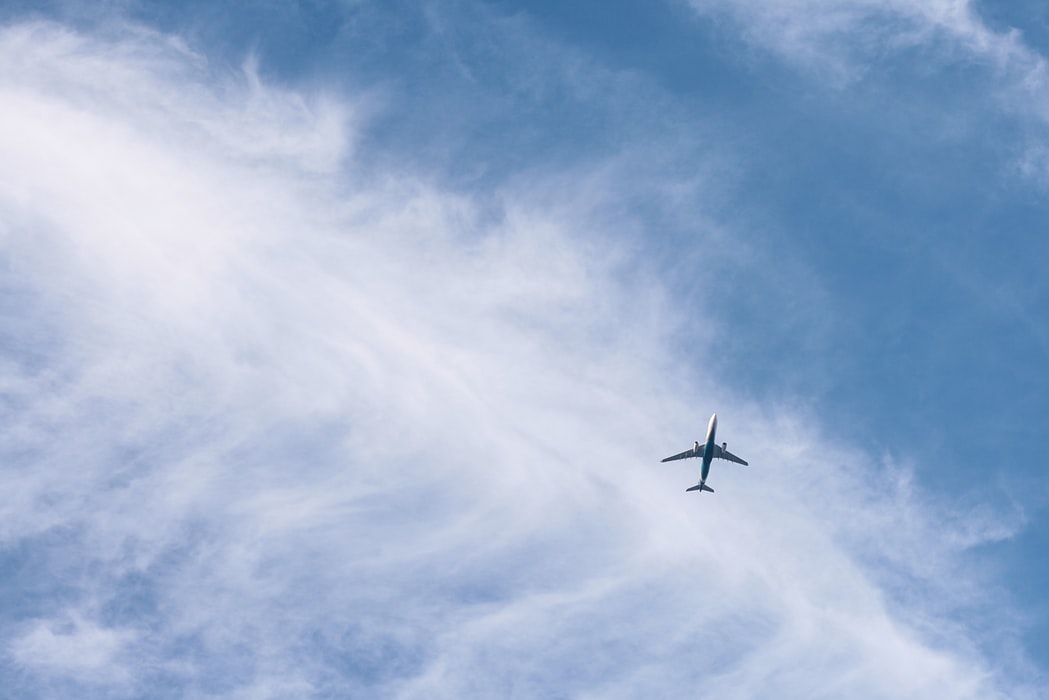How To Carbon Offset Flights

As travel bloggers, we’re guilty of taking flights too often and we feel bad about it. We’ve been worrying about the negative environmental impact of flying and it’s contribution to climate change. But feeling guilty about it is only useful if it leads to action.
We decided it was time for us to be more conscious about how many flights we take and look into carbon offsetting for the flights we do take. Here’s what we found out and how we now carbon offset our flights.
Is Flying Really That Bad?
Air travel is one of most carbon intensive forms of transport. Flights account for 2.5% of the world’s carbon emissions and the industry is continuing to expand rapidly to meet the growing demand for air travel. A return flight from London to New York and back generates roughly the same level of emissions as the average person in the EU does by heating their home for a whole year. That’s shocking.

Is Anything Being Done to Reduce C02 Emissions from Flights?
Whilst more sustainable technologies like biofuels and electric planes are in the pipeline, they’re not coming soon enough. We’re decades away from introducing these initiatives. It’s expected that biofuel will only make up 2.5% of aviation fuel for flights from UK airports by 2050 – which is tiny. The industry is also facing continued challenges with producing biofuels which are sustainable. It also needs to be determined whether the limited supply of bio-energy we have would be used more efficiently in other sectors.
What has happened to reduce CO2 emissions from flights is the introduction of The Carbon Offsetting and Reduction Scheme for International Aviation (CORSIA). This has been implemented by the International Civil Aviation Organisation (ICAO), the UN’s aviation agency. The scheme was agreed to by 192 countries in 2016. The goal of the scheme is to stabilise CO2 emissions at 2020 levels by requiring airlines to offset any increase in their emissions after 2020.
Whilst this sounds positive, the scheme has been heavily criticised. This is due to some members being voluntary until 2027, a lack of ambition to go beyond offsetting schemes and only tackling the ‘increase in emissions’ rather than the total emissions from flights. The ICAO has also come under fire recently for its lack of transparency about the policy.
From a government level, responses to high CO2 emissions from flying have been slow. Richard Branson has been critical of this slow response and in an interview on the BBC, he commented: “We need governments to set ground rules. Governments need to get rid of all subsidies on fuels [and] introduce a carbon tax world-wide.” Until then, we need to see action at an individual level. We need to take responsibility for our own carbon footprint and take positive action.

What Are Carbon Offset Schemes?
Carbon offsets are voluntary financial contributions to projects that help reduce CO2 emissions. The idea is that people can donate to these schemes in order to ‘offset’ the emissions produced by the flights they take. Carbon offset projects range from planting trees to clean energy projects. Unfortunately, many passengers are unaware of carbon offsetting schemes. Many more are dubious about how the schemes work and which ones are worthwhile.

How Are Carbon Offsets Calculated?
Carbon offsets are calculated based on the CO2 emissions caused per passenger on a given flight. Carbon offset calculators for flights vary in how comprehensive they are. Basic calculators base the calculation on the number of miles flown. More comprehensive carbon offset calculators look at whether you travel first-class or economy class, the type of plane, the number of passengers and how full the flight was.
We use the myclimate flight calculator to calculate the CO2 emissions for our flights. I also recommend the very comprehensive calculator on atmosfair if you know all of the details about your flight.
How Much Does Carbon Offsetting Cost?
Costs vary between organisations and initiatives, but you can expect to contribute £5-12 to offset a tonne of CO2. To give you an idea of what this looks like, a return flight from London to Barcelona releases 0.48 tonnes of CO2 and would cost approximately £2.50 to offset. A return flight from London to New York emits 2.1 tonnes of CO2 and would cost approximately £11 to offset.
I hate to admit it, but I had initially been put off the idea of carbon offsetting because I assumed it would be expensive. Actually, it’s the opposite. Carbon offsets are cheap. It’s hard to believe that a few pounds could be enough to rectify the impact of an international flight, but there are many low-cost ways to reduce CO2.
How Can We Offset Carbon Emissions from Flights?
There are two main ways you can offset carbon emissions from your flights: through the airline or independently. Here’s what you need to know:
Carbon Offset Through Your Airline
Around a third of airlines offer carbon offsets as an option when you book your flights. By checking the box to offset, you pay an extra fee to a pre-selected carbon offset organisation. Whilst this is an easy option, the schemes vary substantially between airlines. Some schemes are run by the airlines. Others are outsourced to third party schemes and whilst some airlines are transparent about where the money goes, others are not. Research the carbon offset programme used by your airline before donating.
Carbon Offset Directly
The other option is to offset your own carbon directly. This can be done by calculating the CO2 emissions from your flight and donating to a carbon offset project of your choice. By offsetting carbon this way, you can research the project yourself and choose your preferred way to offset. You may also choose to contribute to an organisation which do not directly provide offsets but are charities whose work is likely to contribute to a reduction in CO2.
I recommend reading this article from Ethical Consumer, an ethical consumer movement group, for more information on how to select a credible carbon offset scheme.

Which Carbon Offset Schemes Are Best? (And How We Carbon Offset Flights)
The hardest thing about carbon offsetting is choosing a scheme to contribute to. There’s an overwhelming amount of choice and it’s difficult to know which schemes are going to have the most positive impact. We decided it was best to calculate our own CO2 emissions from flights and look for accredited schemes reviewed by environmental organisations to contribute to.
Gold Standard is widely considered as one of the best organisations for carbon offsetting your flights. The organisation was established by the WWF and other international NGOs. It certifies carbon offset projects based in developing countries and supports sustainable development. Luke and I personally contribute to their project to provide solar cookers for refugee families in Chad.
Other credible carbon offset programmes include:
- Climate Care in the UK
- Atmosfair in Germany
- MyClimate in Switzerland
- Cool Effect in the USA

Are Carbon Offset Schemes Worthwhile?
Carbon offset schemes have been heavily criticised for two reasons. Firstly, they allow people to reduce their guilt rather than taking direct action to reduce their carbon footprint by flying less. There are ethical questions around whether ‘paying a tax’ for the pollution we cause by taking flights makes people less likely to change their behaviour and reduce the number of flights they take.
After all, carbon offsetting doesn’t get rid of the carbon dioxide produced when you fly. That CO2 still enters the atmosphere. Instead, carbon offset schemes reduce roughly the same amount of CO2 being released from your flight from somewhere else. This could be done, for example, by providing communities with energy-efficient cookers or light bulbs.
The second reason carbon offset schemes have been criticised is because it can be difficult to calculate the exact achievements of the carbon offsets. Many schemes have indirect or long-term impacts that are hard to measure and require a commitment to educate communities in order to implement cleaner energy. For example, buying an energy efficient light bulb could save 250kg of CO2 over 6 years but that relies on it being used for that amount of time.
Are the carbon offset schemes worthwhile? Whilst reducing the amount of flights you take is the best answer to the problem, if you are going to or have to fly, then carbon offset schemes are a much better option than taking no action. Many of the most credible carbon offset projects also promote social good and sustainable development, which is always positive. Our 2019 flights have cost £30 to offset so far and calculating the tonnes of CO2 causing damage to the environment has made both of us think more carefully about when we fly.





ScoutMyTrip
I think travelers should refrain themselves from using any kind of plastic, this is one direct action that anybody can follow. There are many other things like planting a tree and taking care of it, using bicycles for short travel.
Charlie Marchant
I agree that would be ideal and planning your travels and packing list can really support going completely plastic free when travelling.
Katie Featherstone
Thank-you for this Charlie.
Val Greene
Someone had to say this. Thanks for sharing your awesome ideas. So helpful.